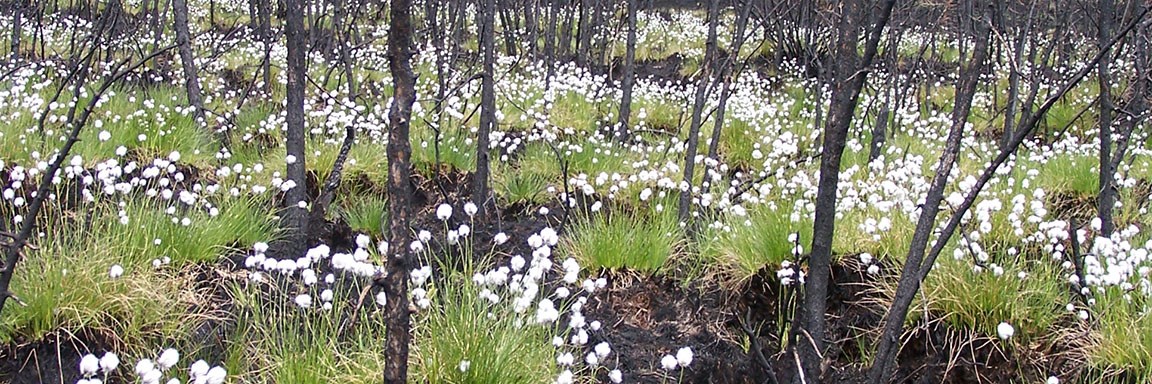
NPS photo
Wildland fire is an essential, natural process in the Alaskan boreal forest and tundra. What at first looks like devastation soon blooms into a panorama of life!
The purpose of the National Park Service, Alaska Fire Ecology Program is to understand the ecological effects of fire on the landscape. Fire ecologists collect and analyze information about the effects of fire on vegetation, fuels, soil, and wildlife habitat and the fire behavior associated with vegetation and fuel types. The results inform fire management planning, objectives, and decisions.
Research
Fire science research informs fire management questions, decisions, and actions. The Alaska National Park Service Fire Management Program has collaborated with universities and interagency partners to study the role of tundra fires in Noatak National Preserve over the past 5,000 years and climate change impacts on fire. Research revealed that fire is a natural process on the tundra. Ecologists have also researched burn severity mapping in Alaska national park units. Burn severity influences vegetation patterns and succession after a fire. Read the Alaska Park Science articles below for more information.
Alaska Park Science, Volume 10, Issue 1
Projected Vegetation and Fire Regime Response to Future Climate Change in National Parks in Interior Alaska
Alaska Park Science, Volume 10, Issue 1
The Burning Tundra: A Look Back at the Last 6,000 Years of Fire in the Noatak National Preserve, Northwestern Alaska
Alaska Park Science, Volume 4, Issue 1
Space-Based Burn Severity Mapping in Alaska's National Parks
What happens after a Tundra Fire (Noatak National Preserve)
Links
Denali National Park and Preserve Fire Ecology
NPS Fire & Aviation Program, Fire Ecology
Policy Guidance, Fire Monitoring Handbook, Data Management, Analysis, and Results, Adaptive Management in Fire Monitoring, Fire Effects Monitoring, Fire Ecology Contacts, Fire Ecology Stories, Research and more.
Alaska Fire Science Consortium
Last updated: June 20, 2025
